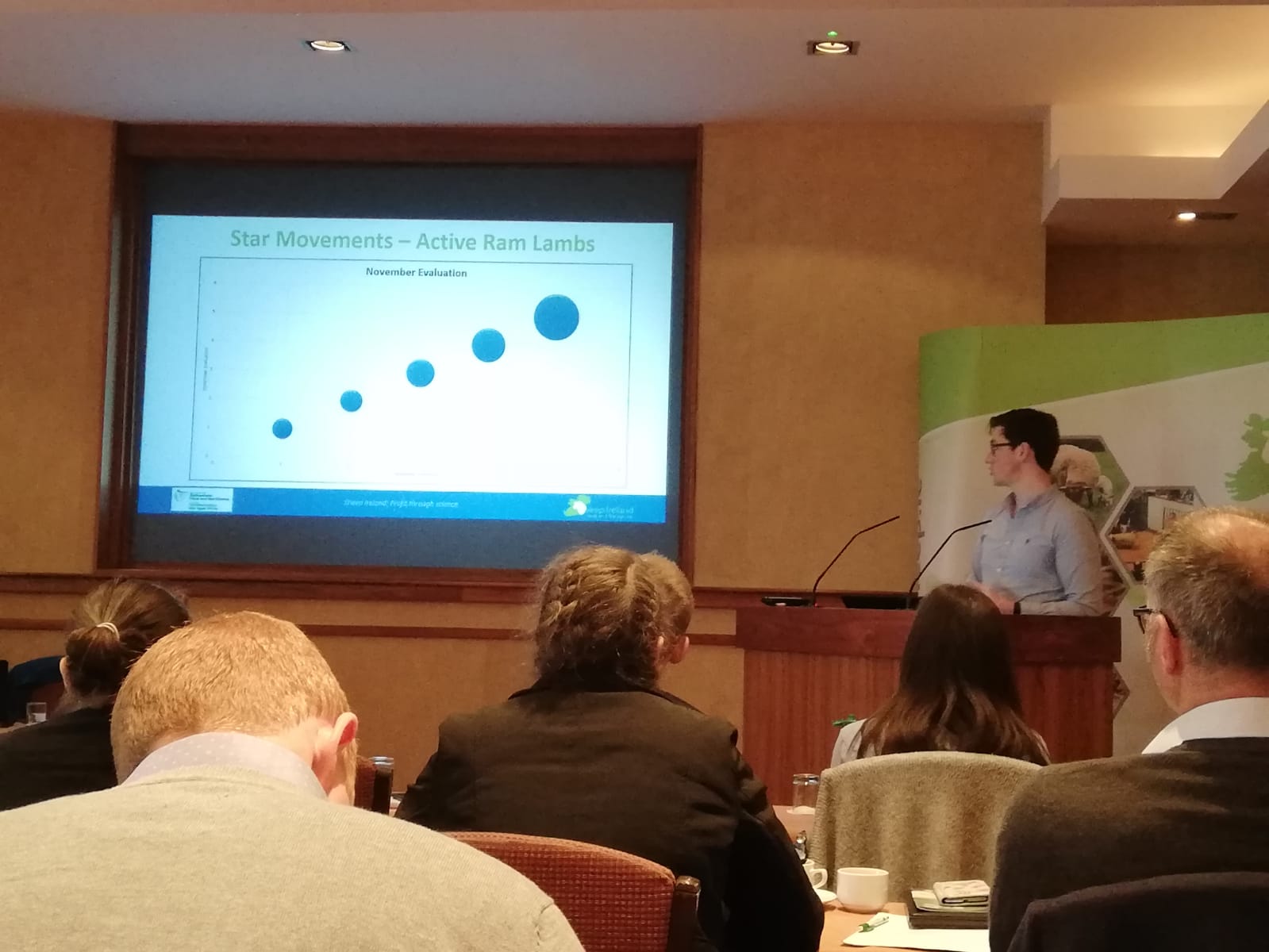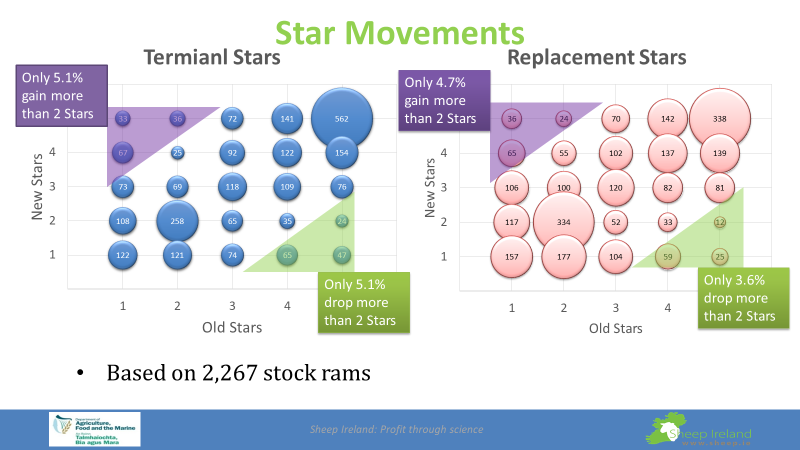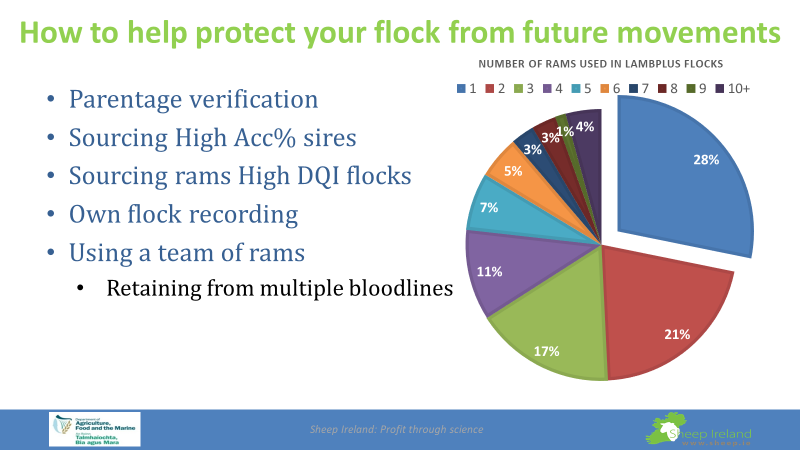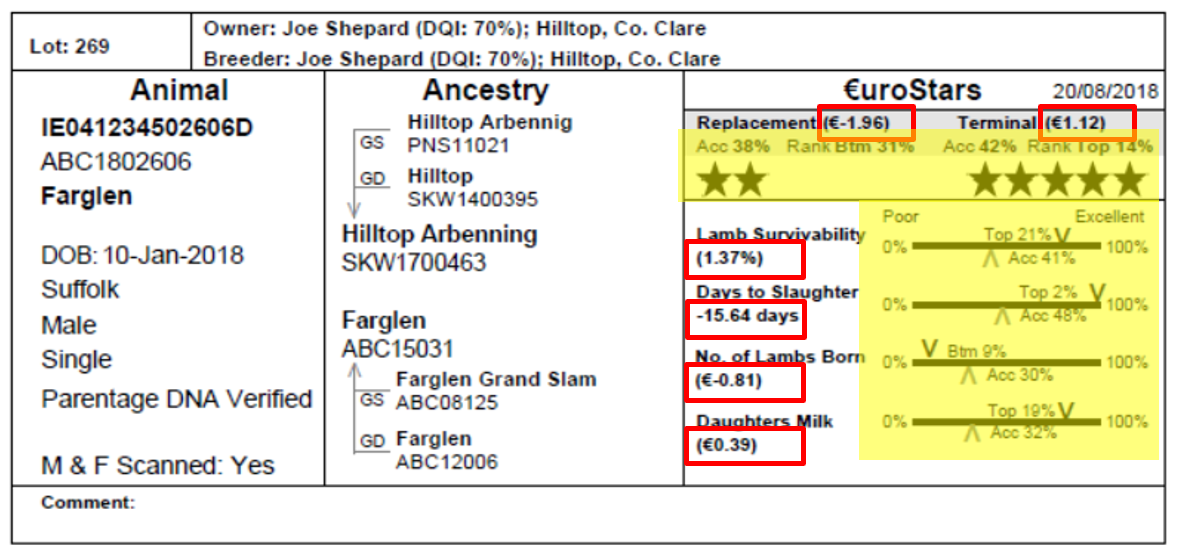At the Sheep Ireland Industry Meeting held in Tullamore on Monday (April 29th), Sheep Ireland’s Kevin McDermott explained the Impact that these Improvements to the Genetic Evaluation would have. View the full presentation here.
At the beginning he stated
“So far today we have heard about some fantastic research and development work that has been carried out over the past year, from the inclusion of carcass data in the evaluation, to parentage corrections, updates to the heritability’s and the introduction of an across breed evaluation and more. The inevitability of all these improvements however is that some animals we be reranked”.
EuroStar Movements
The number of stock rams that drop significantly (more than 2 Stars) is only 5.1% and 3.6% on the Terminal and Replacement Index respectfully. Sheep Ireland is aware that this is off little comfort to the owner of these rams that fell and we do not take significant moves in the Stars lightly, as we are aware of the financial implications this can have for a pedigree breeder. We are also aware that if we now have new information to indicate that a bloodline is less profitable than expected, we must update the stars so that commercial farmers can avoid the negative financial effects of purchasing less profitable genetics. He also pointed out that 5.1% and 4.7% of stock rams on the Terminal and Replacement Index rose by more than 2 Stars, so their are as many rams gaining as there are losing.
How flocks can help protect their flocks from movements
The principles that Sheep Ireland have specified in the past to help flocks avoid being negatively implicated by movements in EuroStars were reiterated. Sourcing Rams from flocks with high accuracies and a high DQI score, recording as much data as possible on their own flocks, and using a team of rams. Almost 75% of LambPlus flocks used a team of rams in 2018, these flocks will on average see less movements in their over flocks’ evaluations, whereas the 25% of flocks that did not use a team of rams are leaving these selves more open. We recognise that it can be difficult for some flocks to use a team of rams due to their small size, but he would highly recommend that flocks share a ram with another flock that they work closely with or use AI on a proportion of their flock.
The other new way to reduce star movements is to adopt parentage verification practices in the flock, especially with stock rams entering the flock to ensure the rams entering the flock have the most accurate evaluations possible before using them on your flock.
Has the Evaluation Improved?
On a technical level the evaluation has improved. Genetic evaluations are judged based on their ability to predict the future performance of animals and this is done generating a regression slope, the closer this slop is to 1, the better. The previous evaluation had a slope of 0.41, and the new evaluation has a slope of 0.66, which is a significant improvement on the Technical side. However what breeders and farmers are most interested in is what this means for some of the main traits. The good news is that the differences between 1 Star and 5 Star animals is increasing. For example, the old evaluation model could predict a difference of -7.42kg in ewe mature weight, while the new evaluation can predict up to -9.52kg, which is an increased difference of -2.10kg.
How will these results be presented?
The good news is that the format of the catalogue remains unchanged, however some of the data is now even more informative. The figures highlighted in the red boxes will now be comparable across breeds, where as previously this was not the case. This will allow farmers to select the most genetically elite rams on an index/trait, regardless of breed if they so wish.
The star ratings and rankings will remain within breed, allowing breeders and farmers to identify where they are ranked within the breed.





